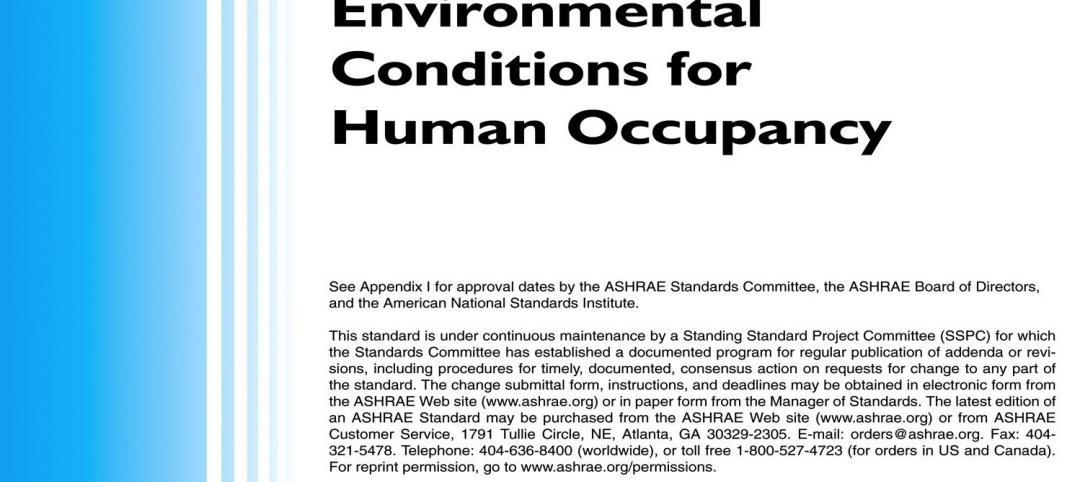Two organizations focused on leadership in the built environment are now working in unison to explore ways public-private partnerships (P3) can be used to achieve high-performance buildings. The National Institute of Building Sciences (NIBS) and the Royal Institution of Chartered Surveyors (RICS) are bringing together international experts on the utilization of P3 to address current government challenges and advance the achievement of a high-performance building stock.
Building owners and policy makers are becoming increasingly interested in the performance of buildings. Whether driven by sustainability, resilience concerns or the desire to protect the investments of taxpayer dollars, government agencies are under increasing pressure to achieve performance-based requirements. These pressures are coming at a time when budgets for new facilities, major capital improvements and long-term maintenance are contracting. Utilizing P3s may help governments overcome challenges related to project financing while driving achievement of performance requirements.
Despite their potential benefits, P3s have not been widely used for building projects in the United States. However, many governments, including Canada, Australia and members of the European Union, have found success in utilizing the approach for facilities such as schools, hospitals and prisons.
“Public-private partnerships can be a great tool for government agencies to improve energy efficiency, resilience and other high-performance building attributes, while reducing the cost of implementation,” said NIBS President Henry L. Green, Hon. AIA. "With the Institute's focus on achieving high-performance buildings and expertise in whole building design, and RICS's expertise in project finance and access to international best practices, we hope to lead the way towards greater use of P3s."
Despite their potential benefits, P3s have not been widely used for building projects in the United States. However, many governments, including Canada, Australia and members of the European Union, have found success in utilizing the approach for facilities such as schools, hospitals and prisons. And some P3 experts and organizations in the field think it’s about time to expand application of the concept to buildings in the U.S.
“The idea of applying the P3 concept more to buildings, and especially building performance, is a potentially promising new avenue in the U.S. for this powerful and creative partnership model,” said Americas Managing Director for RICS Neil Shah. “We are enthusiastic about collaborating on this initiative with NIBS, and combining our extensive resources to see how private industry can help public agencies to maximize energy efficiency and save taxpayer dollars. And we look forward to having more to say on this important subject at next year’s RICS Summit of the Americas.”
Shifting to a greater focus on building performance across the facility life-cycle is a more cost-effective and efficient way to achieve high-performance buildings. At the beginning of the P3 process, the government agency occupying the building identifies the required performance and terms of the project. With the performance requirements defined early, the private partner can then work across the design, construction and operations phases of the project to identify the most cost-effective strategy to assure such requirements are met.
International authority on housing, real estate and infrastructure Sandy Apgar, FRICS, CRE, FIoD, FRSA explained, “P3s enable public authorities and private firms to solve complex building problems that neither could accomplish by working alone. The larger and more complex the project, the more likely it is that a P3 vehicle can leverage government and business resources, and save time and cost over conventional single sector structures.”
Such an approach also encourages the use of emerging best practices (including integrative design processes), adequate training of operations personnel and the sharing of building information.
“Government laboratories have unique research equipment and skills that few businesses can match. And military housing P3s have pioneered award-winning, energy-efficient, environmentally responsible buildings and neighborhoods, through novel site layouts, ‘green’ construction materials, and numerous other technical and operational innovations,” Apgar continued. “On the other hand, businesses have organizational know-how, management systems, and pro-active cultures that are challenging for public agencies to adopt, and could help government agencies integrate and make the most of these private-sector innovations.”
NIBS and RICS are set to begin work on the P3 project this summer and are looking for input from industry experts. The two organizations plan to issue a report on the topic in April 2016 at the RICS Summit of the Americas in Washington, D.C.
Experts interested in participating in this effort can contact Ryan Colker at NIBS [rcolker@nibs.org] or Thomas Pienaar at RICS [tpienaar@rics.org] to learn how get involved.
Related Stories
| Dec 26, 2013
USGBC recognizes Ohio for achieving 100th LEED-certified public school
The U.S. Green Building Council (USGBC) has recognized the state of Ohio and the Ohio School Facilities Commission (OSFC) on the LEED certification of the 100th public school building in the state.
| Dec 26, 2013
WDMA launches project to create ISO-compliant architectural doors
WDMA's National Architectural Door Council has initiated a project to create ISO-compliant Product Category Rules for architectural wood flush and stile and rail doors
| Dec 19, 2013
Defense Department okays Green Globes standard for DoD facilities
The Green Globes certification program from the Green Building Initiative can be used for the renovation and construction of Department of Defense facilities following agency endorsement.
| Dec 19, 2013
New York City proposal may boost standards for crane maintenance
New York City may boost maintenance standards for cranes operating in the city, including the addition of load cycle counters to record data regarding every lift that a crane performs.
| Dec 19, 2013
Lawmakers say EPA’s Energy Star standards lack transparency
A bipartisan group of lawmakers is raising concerns that the Environmental Protection Agency has not been transparent in drafting energy-efficiency standards under the Energy Star program.
| Dec 18, 2013
ASHRAE publishes 2013 thermal comfort standard
Major revisions for design and measurement of comfortable spaces are included in a newly published ASHRAE 2013 thermal comfort standard.
| Dec 11, 2013
Texas to require architects to be fingerprinted to get licensed
Starting January 1, 2014, architects who apply for an occupational license in Texas will have to share their fingerprints with the state.
| Dec 11, 2013
Province of Ontario is reviewing bill to require timely payments to contractors
Legislation is under review in the Province of Ontario that would mandate timely payments to contractors.
| Dec 11, 2013
Federal design-build proposal could make it easier for small businesses to land government contracts
The Design-Build Efficiency and Jobs Act, a bill pending in the U.S. House of Representatives, would streamline the bid and proposal process by requiring government agencies to use a two-step process when seeking design-build contracts for projects worth more than $750,000.
| Dec 11, 2013
NIST recommends tougher standards for tornado resilience
Buildings in tornado-prone areas should be constructed to withstand strong winds just as hurricanes are factored into building codes in coastal areas, says a federal report examining the 2011 killer tornado in Joplin, Mo.














